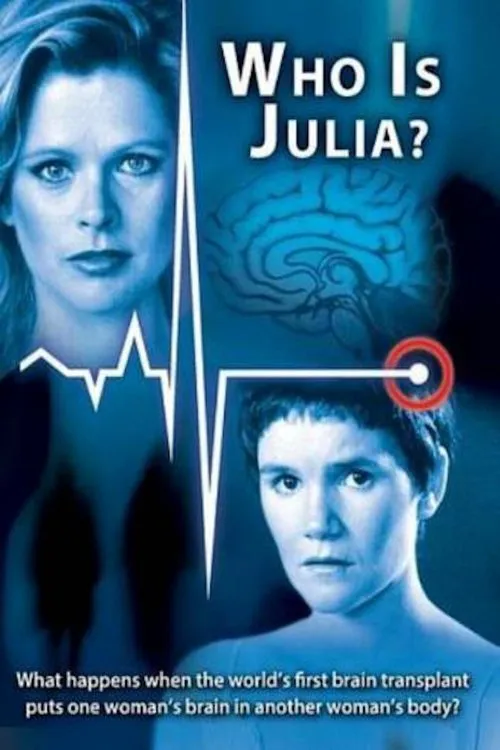Who Is Julia?

Plot
In the movie "Who Is Julia?", the lives of two women intersect in unexpected ways, leading to a profound exploration of identity, class, and the complexities of human relationships. The film begins with a devastating car accident involving Julia, a stunningly beautiful and wealthy woman. Despite her physical appearance being beyond recognition, Julia's brain miraculously sustains no significant damage. In a remarkable medical breakthrough, doctors decide to transplant her brain into the body of Bea, a plain-looking lower-middle-class woman who has just suffered a brain death. At first, Bea's husband, Tom, is told that his wife has passed away, and he is in deep mourning. However, when he meets the "new" Bea, who is now occupying Julia's former body, he is convinced that he is still married to his wife. This presents a peculiar situation, as the woman who is now in Bea's body has no recollection of her husband or her life before the accident. As the story unfolds, Bea (with Julia's brain) struggles to adjust to her new surroundings. She is now living with Tom in a comfortable, but unfamiliar, home, surrounded by Julia's expensive possessions and the expectation of conforming to the life and relationships that Julia had built. However, Bea is not Julia, and her experiences, tastes, and social status are vastly different. She is uncomfortable and finds it difficult to interact with Julia's socialite friends and family, who are now her responsibility to manage. One of the most poignant aspects of the film is the way mirrors become a symbol of emotional turmoil. Whenever Bea looks in the mirror, she sees the face of a woman she does not recognize, yet it is the face that stares back at her. This disconnection between her inner self and her external appearance serves as a constant reminder of the duality of her situation. She is both the woman in the mirror (Julia) and the woman staring at herself, trying to come to terms with the new reality. Bea's relationship with Tom becomes increasingly complicated. Tom's love for his "wife" remains unwavering, while Bea is torn between her duty to care for him and her own growing feelings of resentment and disconnection. The tension between them is exacerbated by the fact that Bea has become a constant stranger in her own life, unable to access the memories and experiences that Julia had accumulated over the years. As the story progresses, Bea develops a closer relationship with Mark, Julia's husband, who is initially stunned by the transformation of his wife. While Bea is initially drawn to Mark's kindness and empathy, she also feels an underlying resentment towards him for his lack of understanding and support. Mark, who is struggling to accept the loss of his wife, is increasingly torn between his love for her and his growing feelings for the "new" woman in Julia's body. Through the narrative, the film raises important questions about what it means to be a person. Is it the physical appearance, the memories, or the experiences that make us who we are? As Bea navigates her new life, she begins to realize that her identity is not fixed or inherent, but rather a complex interplay between her thoughts, feelings, and circumstances. This realization is both liberating and unsettling, as Bea comes to terms with the fact that she is not just a woman living in another woman's body, but rather a unique and distinct individual, worthy of her own experiences and relationships. Ultimately, "Who Is Julia?" is a thought-provoking film that challenges the viewers to think critically about the nature of identity, class, and human connection. The movie's themes are both heartbreaking and redemptive, offering a nuanced exploration of the complexities of human relationships and the resilience of the human spirit.
Reviews
Recommendations


